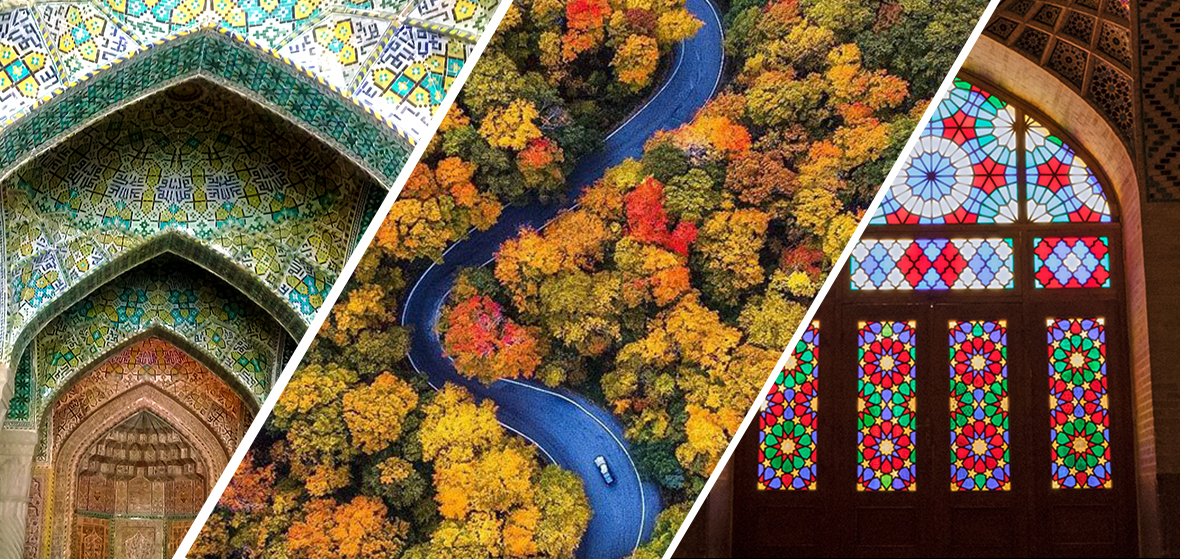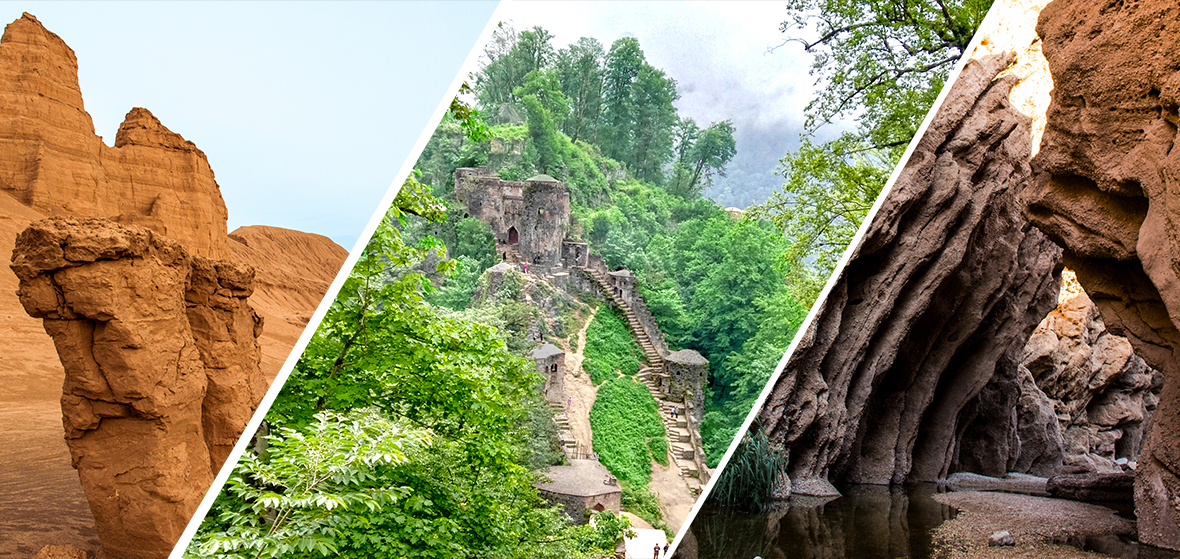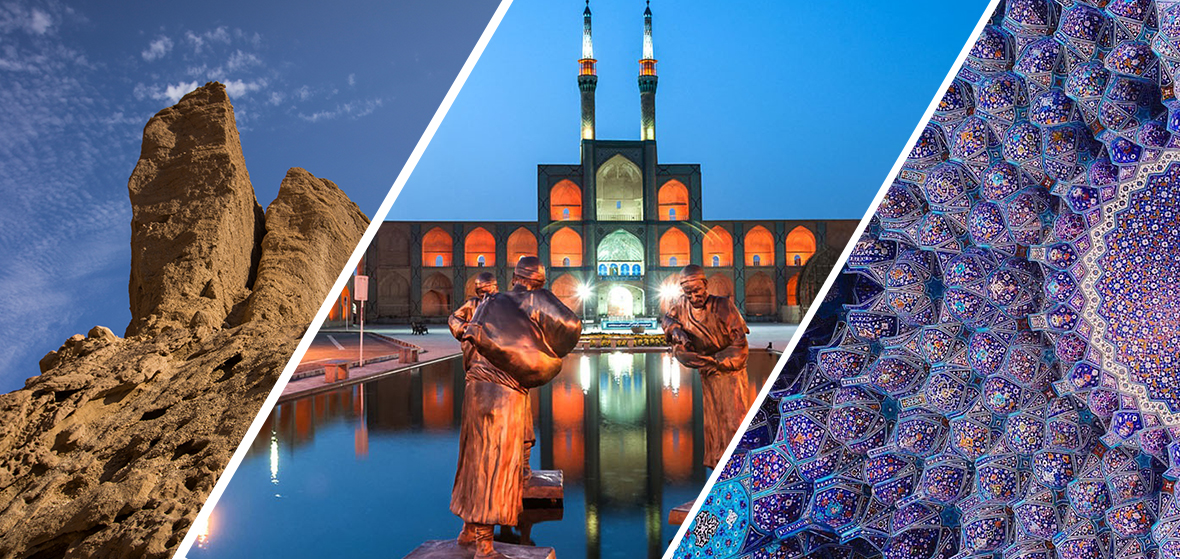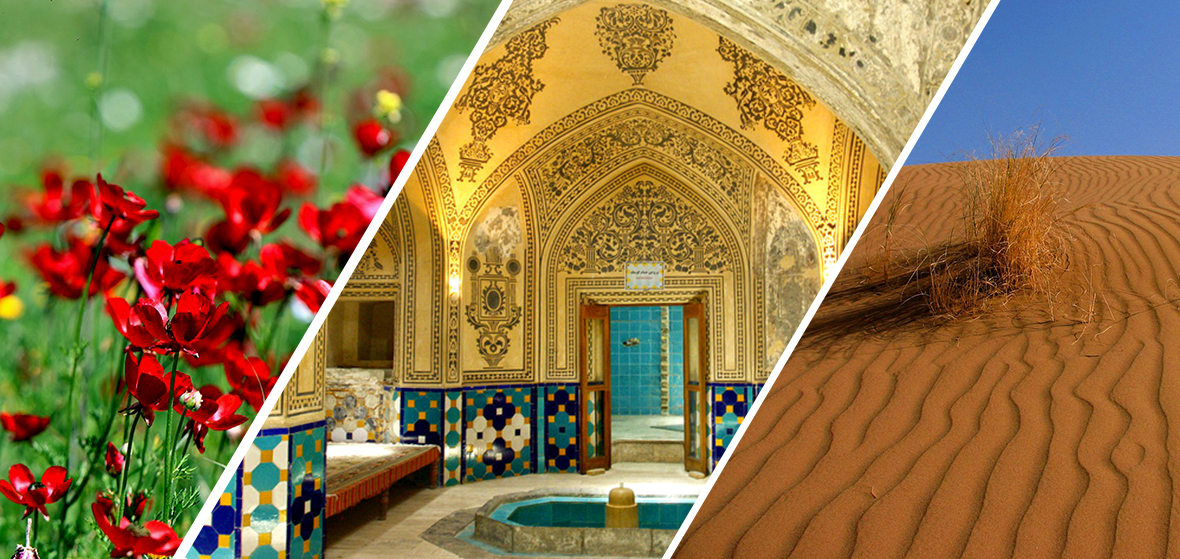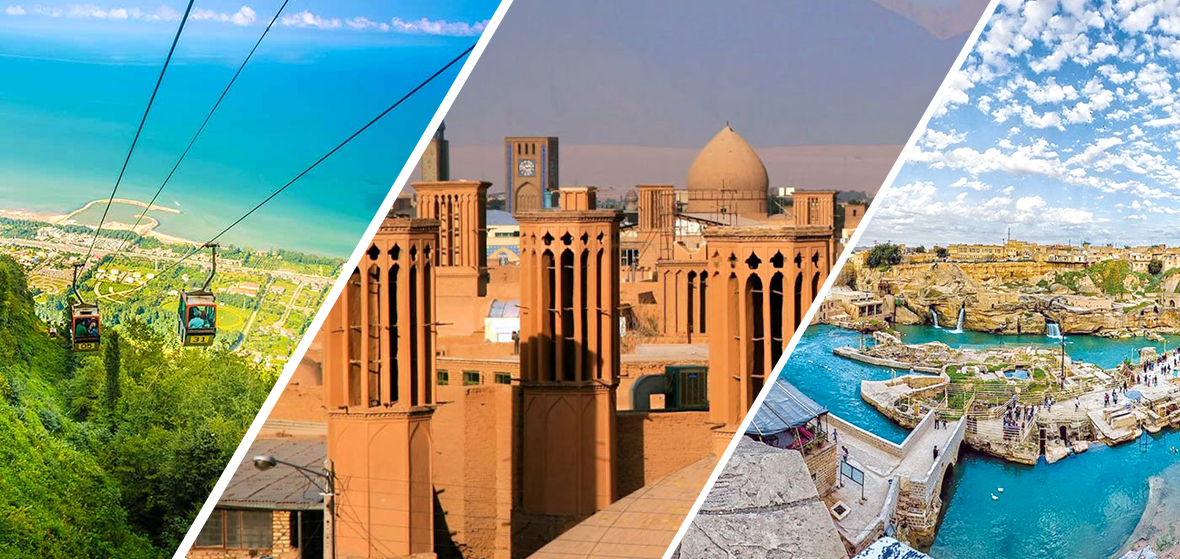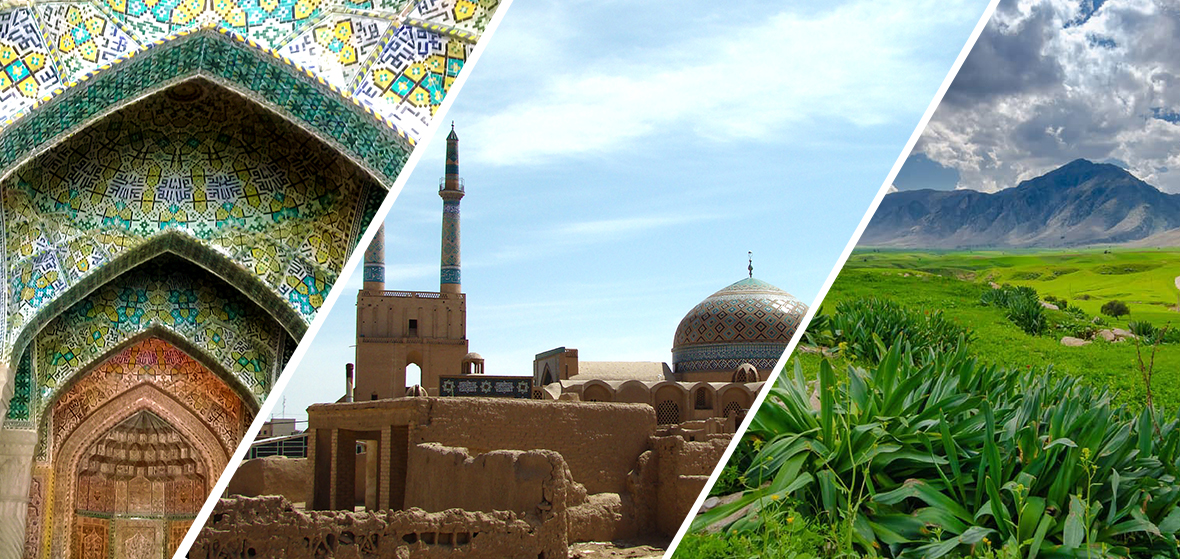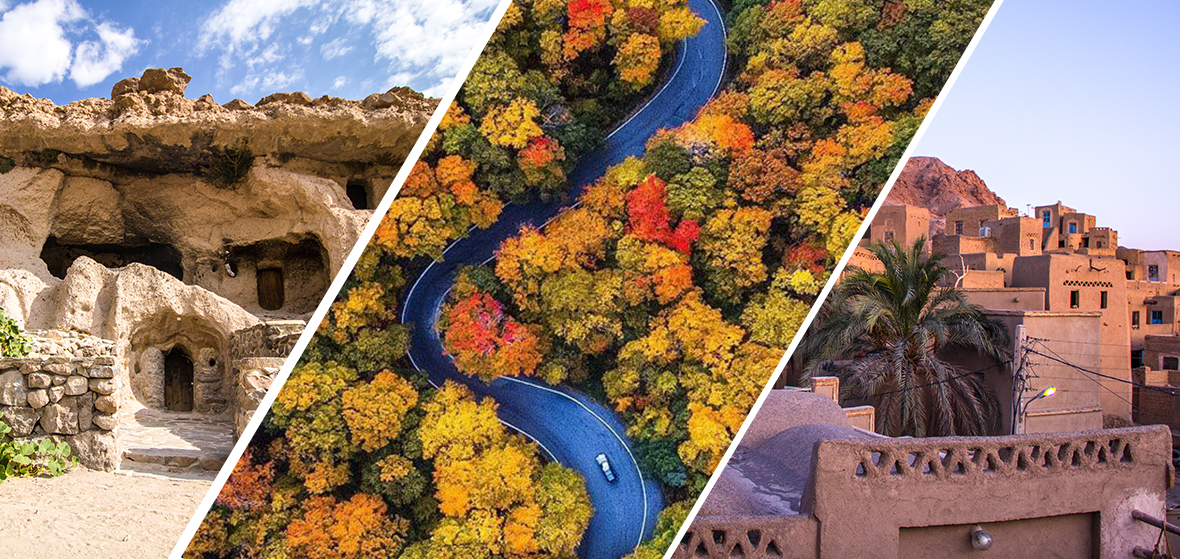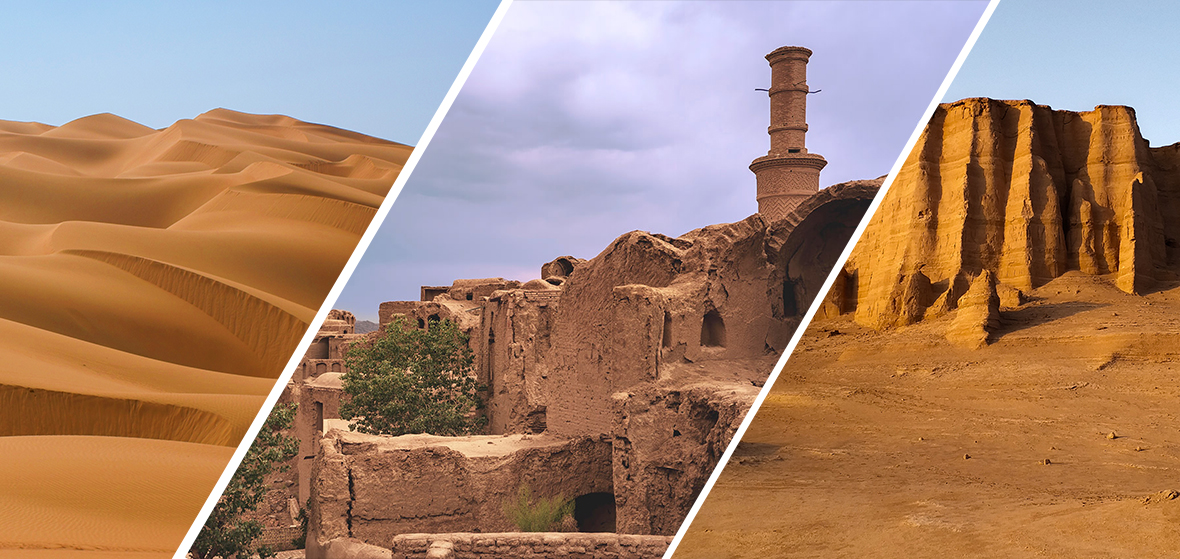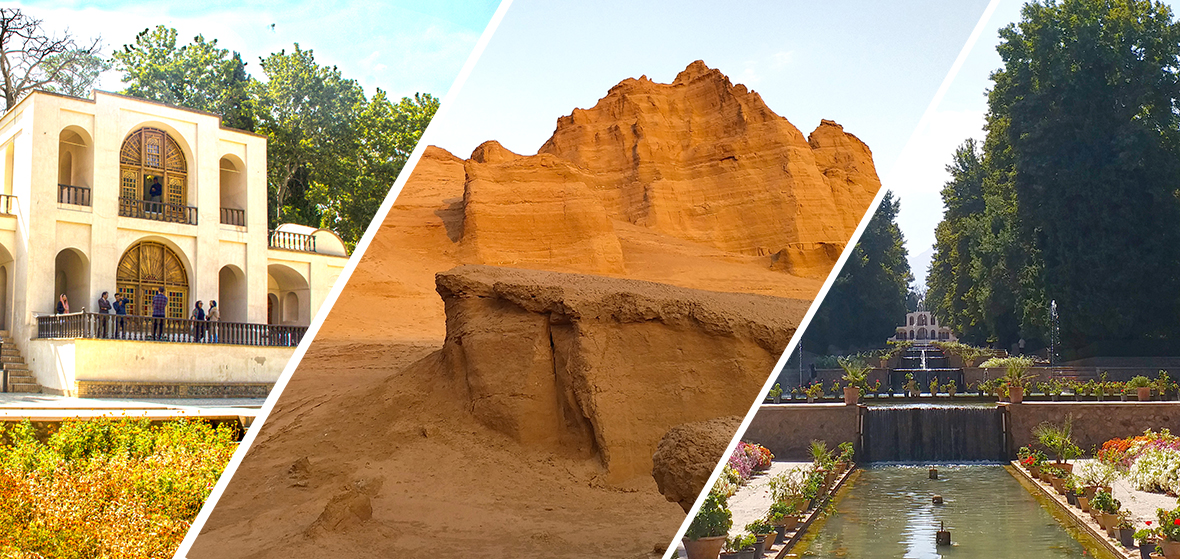Meymand:
In Iran, in addition to villages with pristine and enchanting nature, where you can enjoy a few days away from the hustle and bustle of crowded cities, there are also many historical villages that take you on an exciting journey through history. Villages that are thousands of years old. The village of Meymand of Kerman is also one of the ancient villages of Iran and is listed on the UNESCO World Heritage List. Meymand is located in the central part of the city of Shahr-e-Babak in Kerman. This village is about 30 km from Shahr-e-Babak.
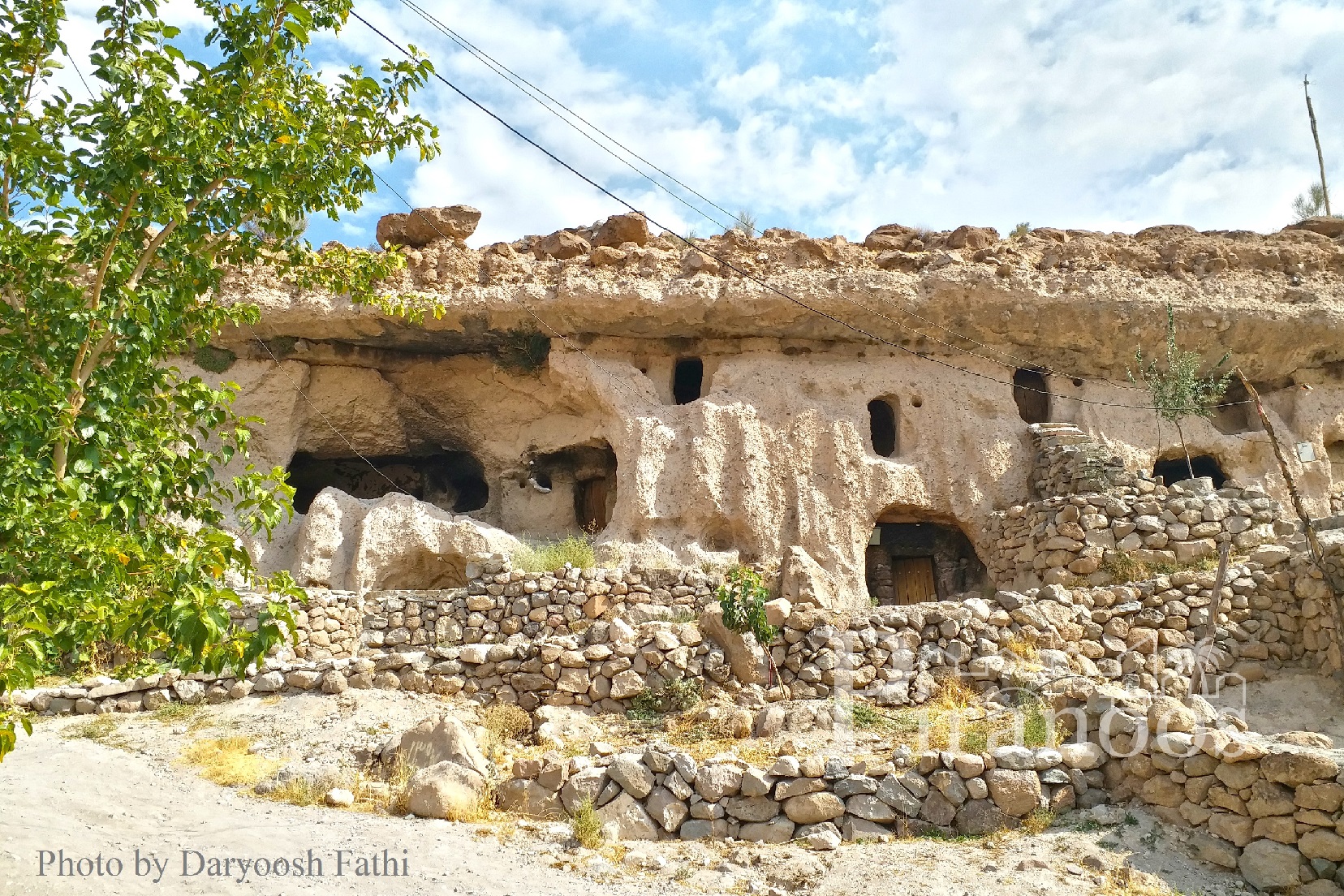
Meymand is one of the ancient villages of Iran where life is still in a traditional style and people have been farming there ever since. What makes the village of Meymand one of the most fascinating villages in Iran is its rocky appearance with the carved houses in the heart of the mountain. The village of Meymand of Kerman is the 19th UNESCO World Heritage Site of Iran and has been awarded the Mercury Prize as the seventh cultural-natural and historical monument in the world.
Meymand is one of the first civilized settlements built by the Aryans in the Medes era. Meymand is at least two or three thousand years old. This was proved by pottery discovered in the area. These potteries date back to the Parthian, Sassanid, and Islamic periods. Meymand’s houses were formed by removing dirt and digging the mountain without using any bricks and stones to build them.
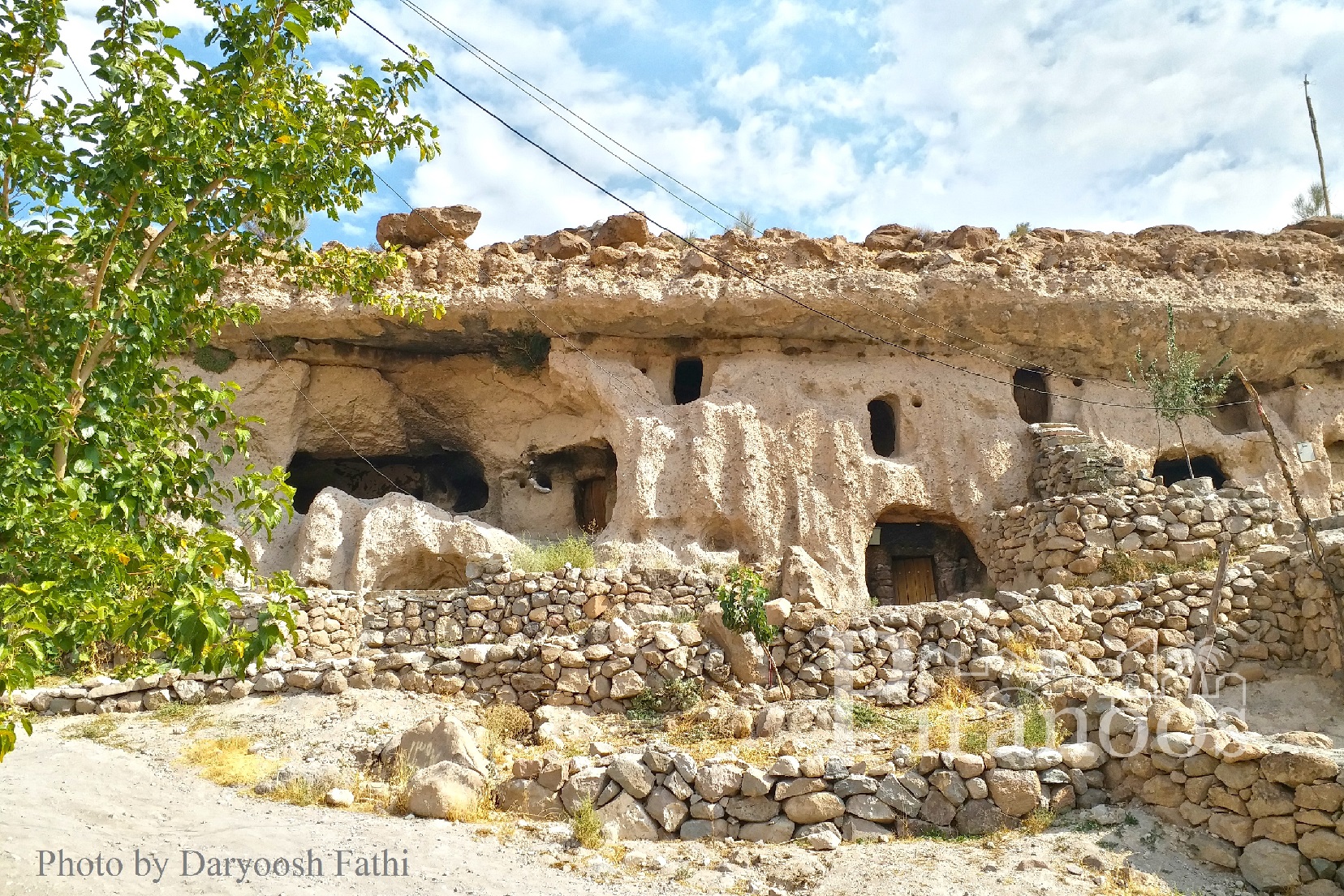
Few examples of rocky villages have remained in other countries, but Meymand differs from all of them. Because unlike desolate rocky villages elsewhere in the world, life is still going on in Meymand; people live in the houses and have built schools and mosques.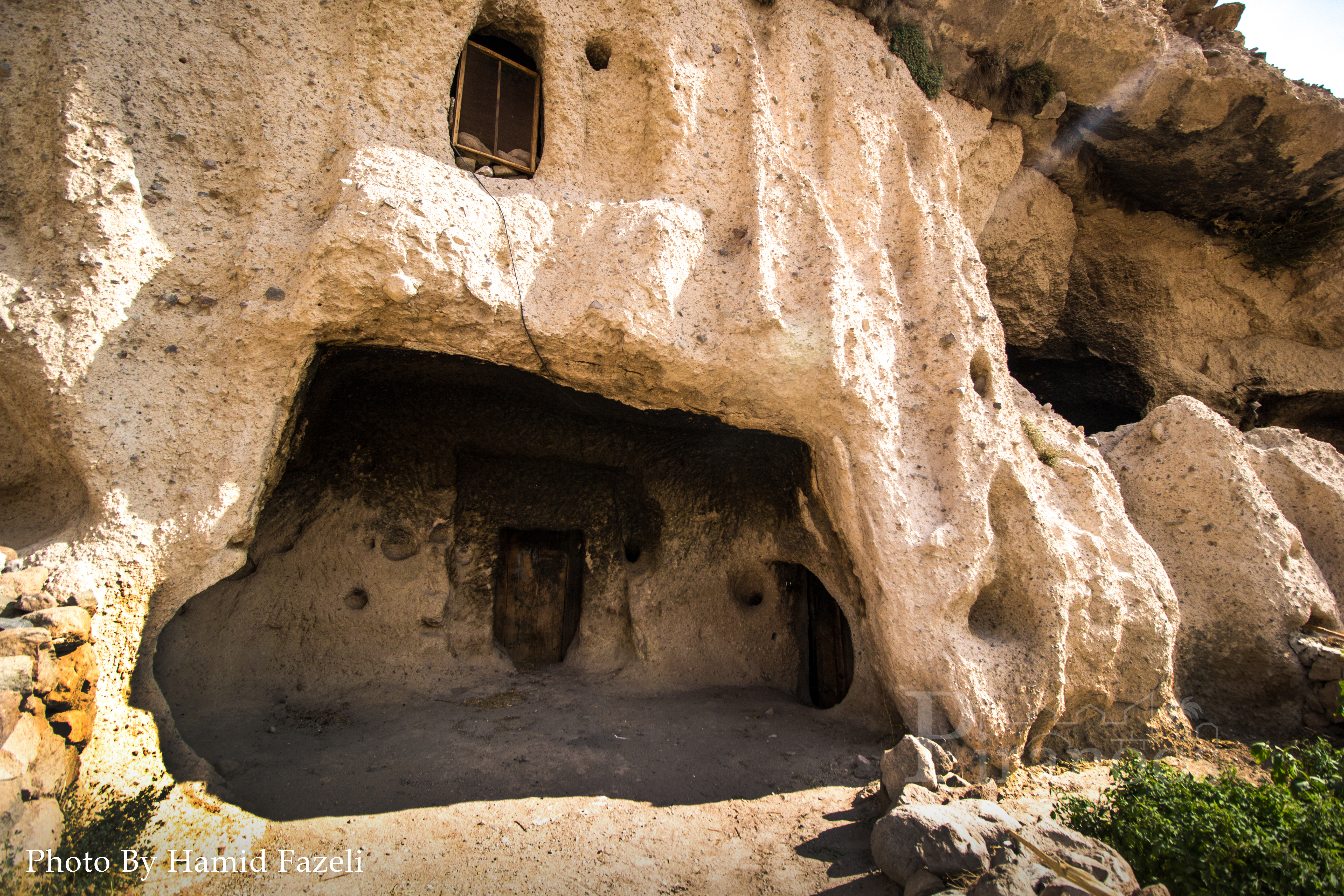
The appellation and the legend of Meymand:
There are different opinions on why this ancient village was named Meymand. Meymand is a word derived from two words “mey” and “mand”. “Mey” means wine and “mand” means drunkenness. The villagers believe that the people in this area used to drink wine and when they got drunk, they dug the houses in the mountains. Others, however, believe Meymand means blessing. Others have identified May as a modified word for Mogh in ancient Persian and Maymand is considered a city of gods.
A strange and legendary inscription was found in Meymand that says:
“When the mountains split in Meymand and the legends of Meymand come true, the treasure of Meymand will unfold and only one person will be able to find it – he who comes from the sun.”
Of course, none of these beliefs have been 100% confirmed yet.
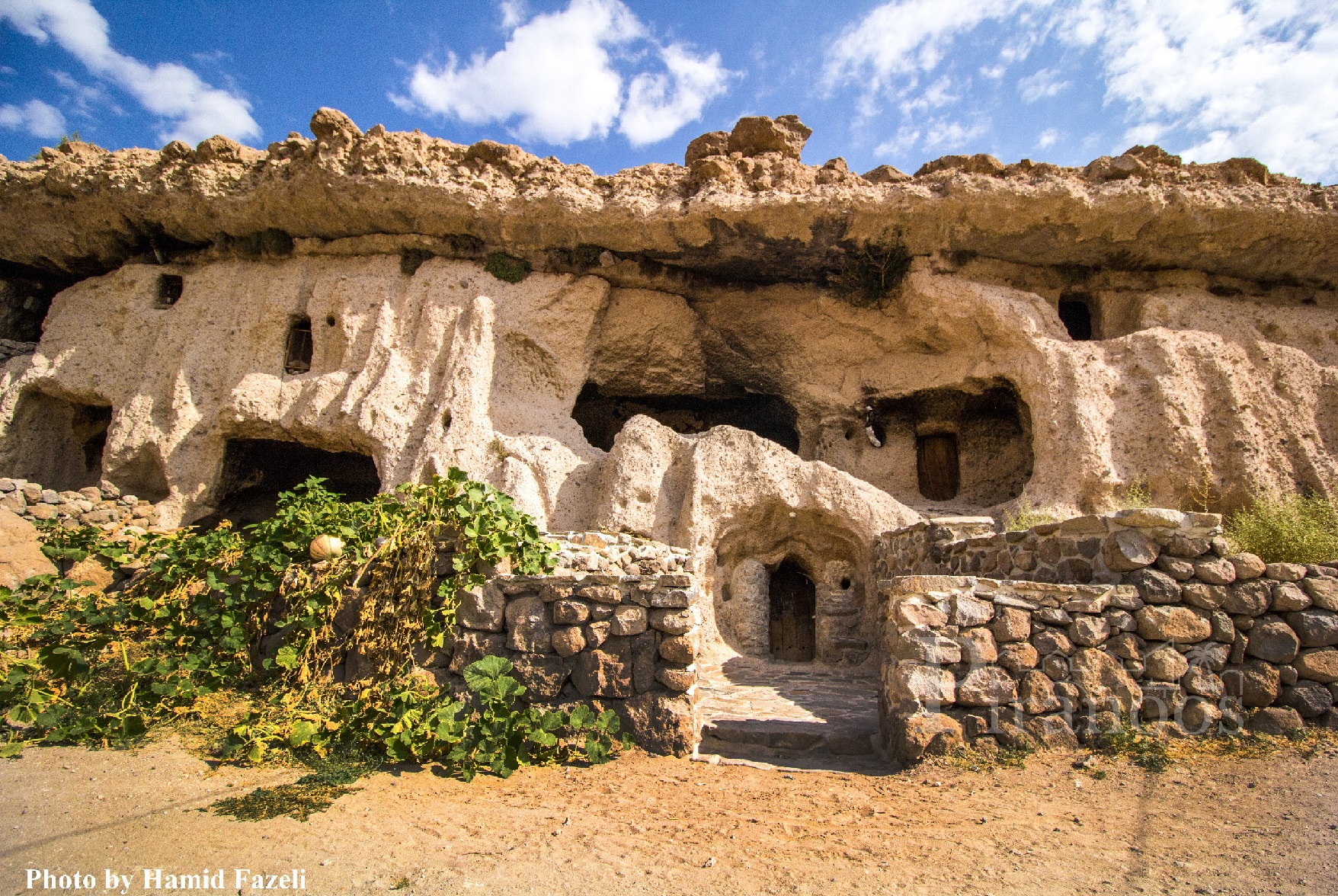
The architecture of Meymand:
Meymand’s houses are consisting of adjacent rooms with common entrances; a house may have several rooms, or even several stables or stairs, with the same entrance door. Usually, there are carved stone corridors at the entrance of the houses, leading to the sidewalks with stables on one side and the living rooms on another. Each set of corridors and living room and stables are called a Kicheh. The walls of the kichehes are all black, a reminder of centuries of fire burning in the rocky houses for lighting and cooking. The interesting thing about Meymand’s architecture is that it is 100% man-made. The rooms and houses in Meymand are not very large, the largest Kicheh of this village do not exceed 90 meters.
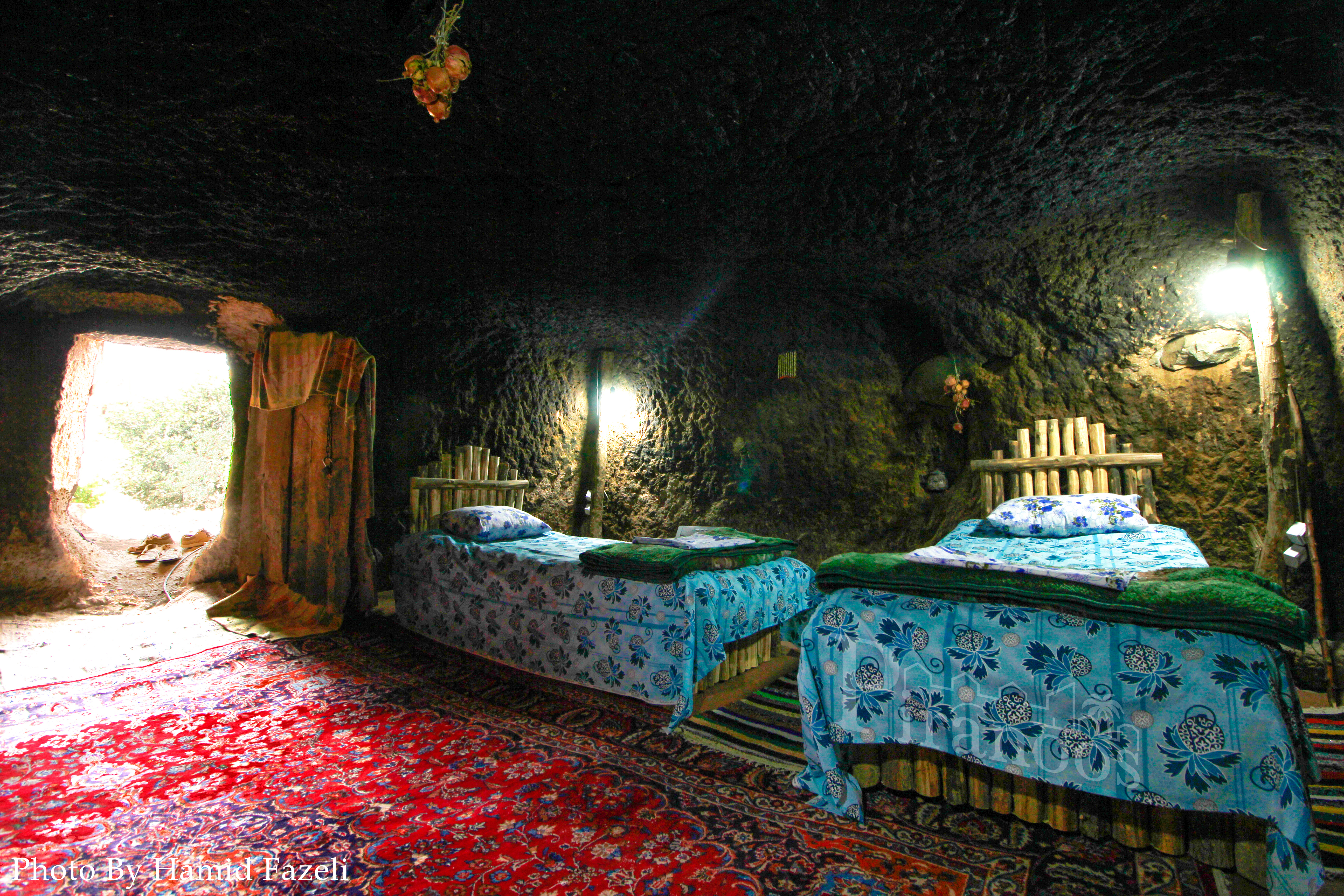
Meymand’s School:
The village’s school is larger than a usual Kicheh and the deeper it goes into the heart of the mountain, the bigger it gets. The school is 16 meters long and 6 to 15 meters wide and consists of five classes.
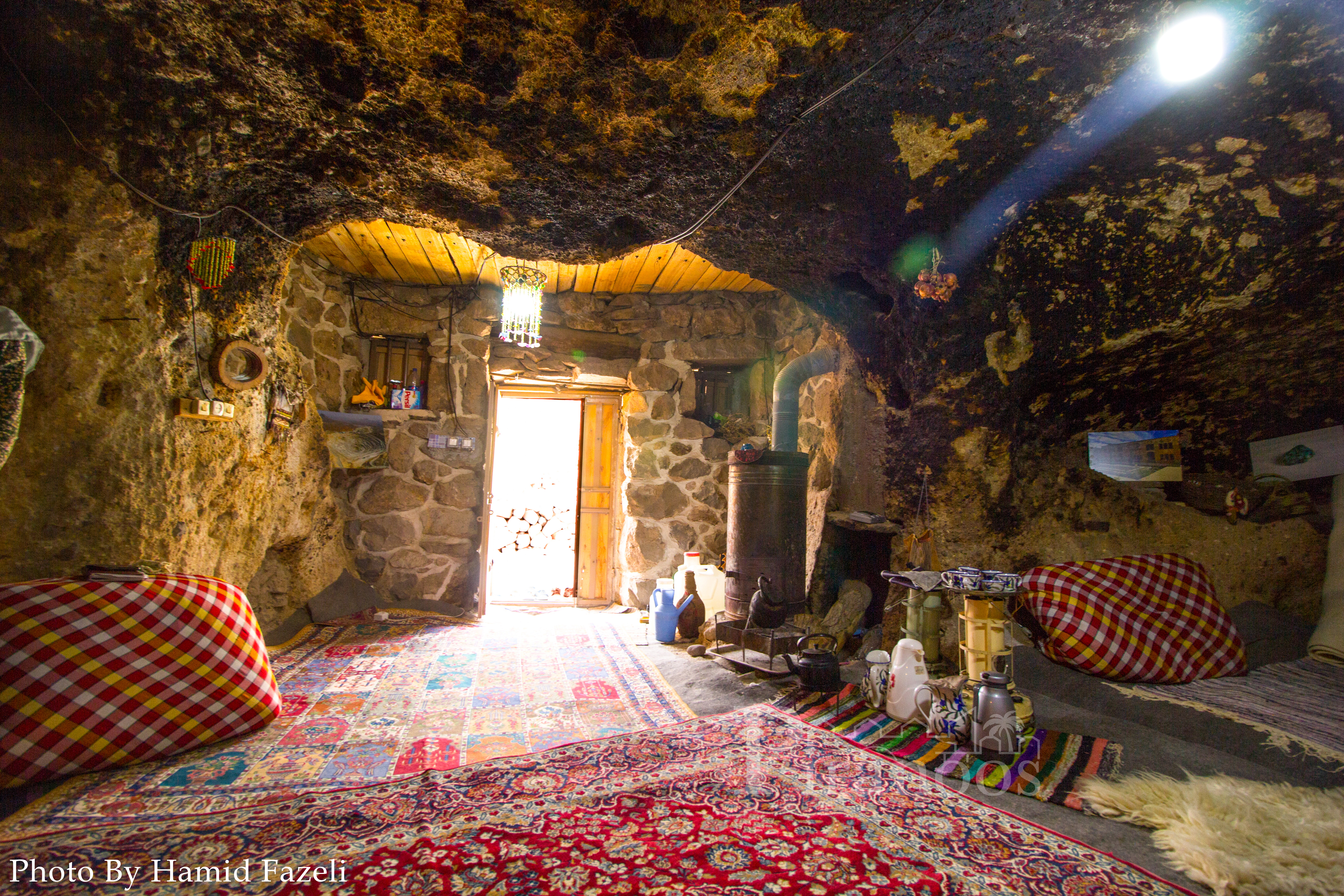
Meymand’s Hamam:
Like all other Kichhes, this bathhouse is located at the end of a stone alley leading to the corridor. The corridor leads directly to the changing room with a small Howz (pool) in the middle and three platforms around it. Behind the changing room is the bath’s khazineh, a large Howz dug into the rock. In the middle of the Howz is a hole that was used to heat the water.
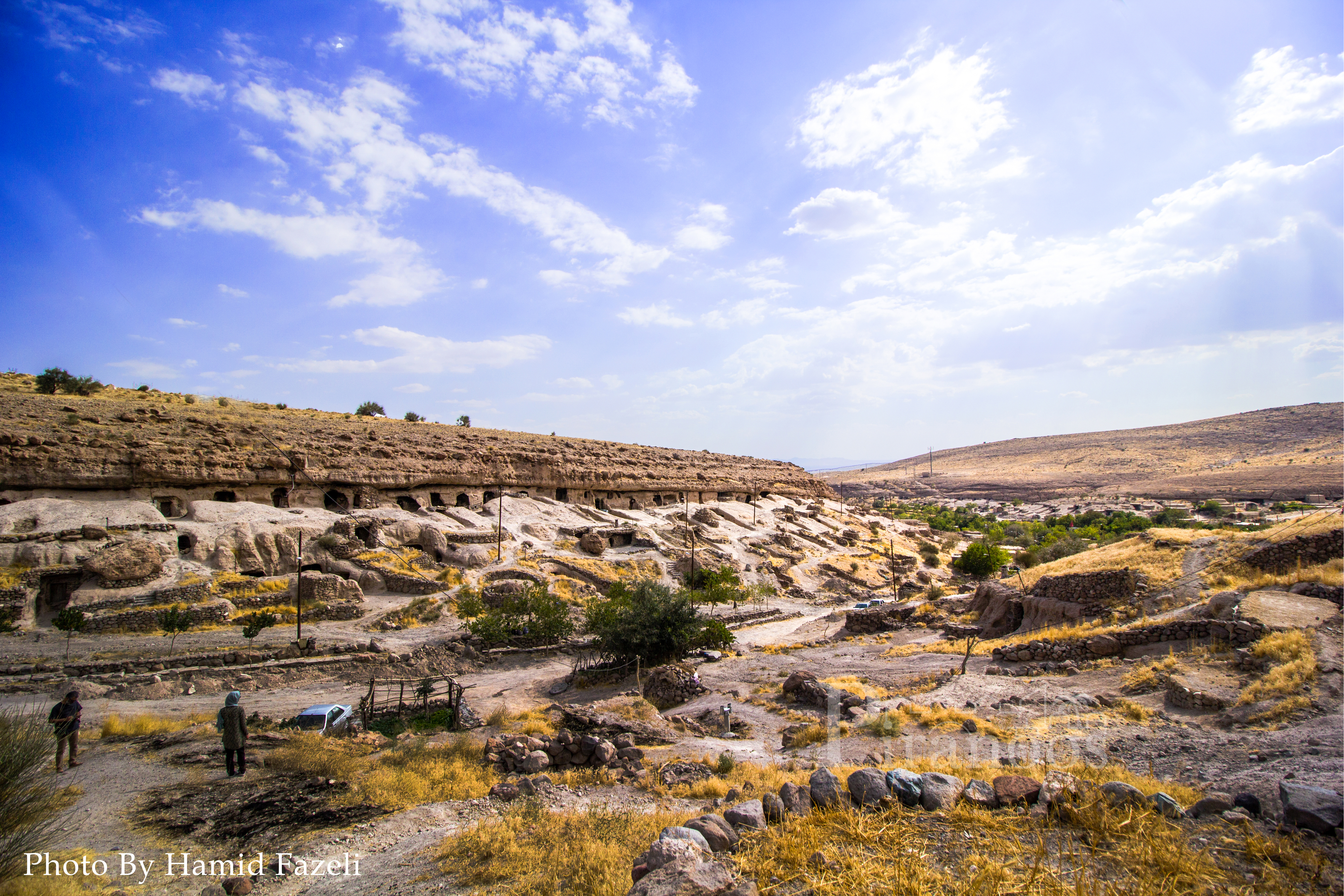
Meymand’s Mosque and Hosseinieh:
The mosque is completely dug inside the rocks and has 3 pillars. This mosque has some carved niches, a 1-meter high altar, and a stone minbar.
Meymand Hosseinieh consists of several interconnected residential kichehes and has an irregular space with 4 stone pillars. This part is constantly changing and still in use.
Iran UNESCO Sites in 40 Days

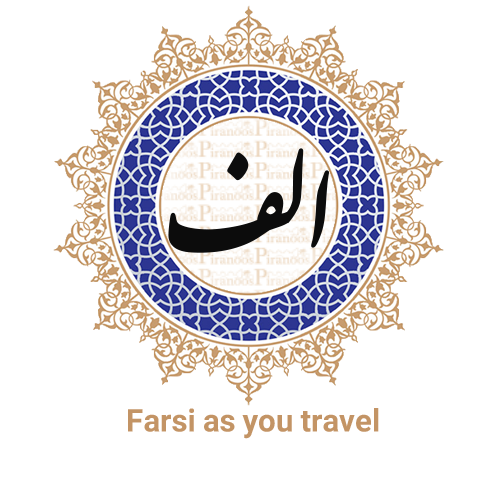
Forty Days & Nights


The Heart of Iran


From Mountains to the Desert


Sand & Sea


A Month in Iran


Center & North of Iran


From Lut to Tehran


Lut


